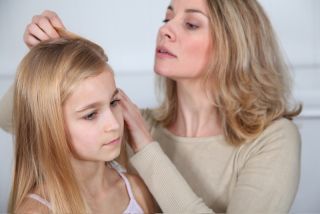Not so nice, Head Lice!
July 28, 2020

Head lice are a common problem that usually effects school-aged children and their families. They can attach to the hair of anyone’s head. It doesn’t matter if the hair is clean or dirty. Though head lice may be a nuisance, they don’t cause serious illness or carry any diseases. Head lice can be treated at home, but it’s important to check with the doctor first.
How do you check for head lice?
Regular checks for head lice are a good way to spot head lice before they have time to multiply and infest (are present in large numbers) your child’s head.
- Seat your child in a brightly lit room.
- Part the hair.
- Look for crawling lice and for nits on your child’s scalp a section at a time.
- Live lice are hard to find. They avoid light and move quickly.
Nits will look like small white or yellow-brown specks and be firmly attached to the hair near the scalp. The easiest place to find them is at the hairline at the back of the neck or behind the ears. Nits can be confused with many other things such as dandruff, dirt particles, or hair spray droplets. How do you tell the difference? Nits are firmly attached to hair, while dandruff, dirt, or other particles are not.
How do you treat head lice?
Check with your child’s doctor before beginning any head lice treatment. The most effective way to treat head lice is with head lice medicine. After each treatment, using the comb-out method every 2 to 3 days for 2 to 3 weeks may help remove the nits and eggs.
Comb-out method:
Step 1: Wet your child’s hair.
Step 2: Use a fine-tooth comb and comb through your child’s hair in small sections.
Step 3: After each comb-through, wipe the comb on a wet paper towel. Examine the scalp, comb, and paper towel carefully.
Step 4: Repeat steps 2 and 3 until you’ve combed through all of your child’s hair.
What else do I need to know about treating head lice?
You may want to wash your child’s clothes, towels, hats, and bed linens in hot water and dry on high heat if they were used within 2 days before head lice were found and treated. You do not need to throw these items away. Items that cannot be washed may be dry-cleaned or sealed in a plastic bag for 2 weeks. All household members and close contacts should also be checked and treated if necessary.
https://www.livescience.com/50629-head-lice-recommendations.html
Next Post >>